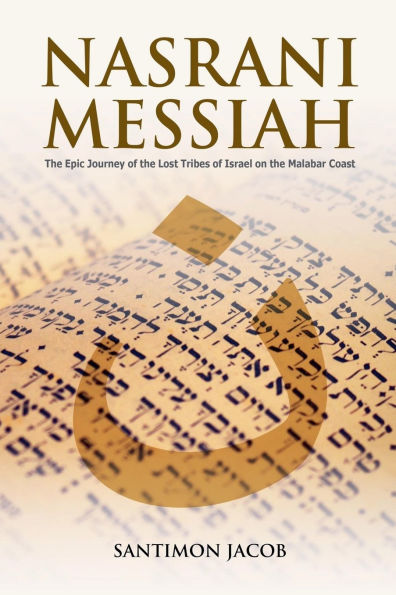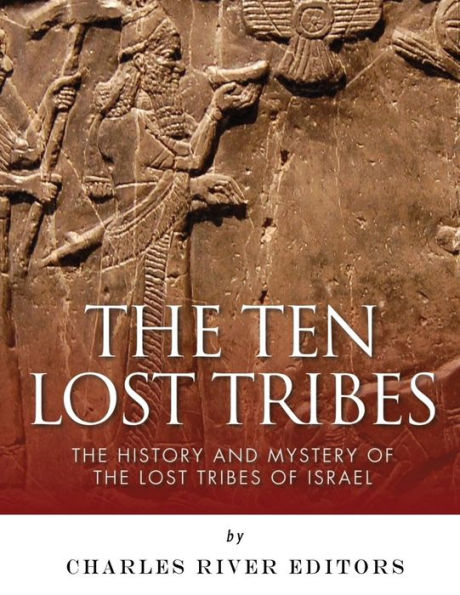Home
Nasrani Messiah: the Epic Journey of Lost Tribes Israel on Malabar Coast
Barnes and Noble
Loading Inventory...
Nasrani Messiah: the Epic Journey of Lost Tribes Israel on Malabar Coast in Bloomington, MN
Current price: $34.99


Nasrani Messiah: the Epic Journey of Lost Tribes Israel on Malabar Coast in Bloomington, MN
Current price: $34.99
Loading Inventory...
Size: Hardcover
At first glance, it was just another letter in the Arabic alphabet-one among many. But for the Christians of Mosul, this letter carried a death sentence. The letter "ن" (pronounced noon), painted in ominous crimson within a circle, was a mark of terror. It stood for Nasrani-the Arabic word for Christians.
On a scorching July morning in 2014, ISIS militants moved through the ancient streets of Mosul, systematically branding Christian homes with this chilling symbol. The message was unmistakable: these homes now belonged to the Islamic State. This act echoed the darkest moments in history, reminiscent of the branding and persecution of marginalized communities across centuries.
Yet, Mosul is no ordinary city. Its legacy reaches back to one of the greatest civilizations ever known. Before it bore its modern name, it was Nineveh-the mighty capital of the Assyrian Empire. Perched on the eastern banks of the Tigris River, Nineveh was once the largest city in the world, the beating heart of Assyrian and later Babylonian power. It was here that the Ten Lost Tribes of Israel were exiled, and it was here that many among them embraced a new faith-Christianity.
This book is a gripping journey into the Nasrani people, the first Jewish converts to Christianity. In Mosul and its surrounding regions, this community faces the threat of extinction, the result of relentless persecution and centuries of exile. Yet, their genetic and spiritual kin survive 4,000 miles away on the Malabar Coast of India.
Here, in the lush landscapes of southwestern India, the Nasranis have flourished for millennia. A remarkable Christian community of six million, they trace their lineage to the ancient port of Muziris. Uniquely, they have preserved traditions unlike any other Christian group in the world. They still observe Passover in the Jewish style, maintain other ancient customs, and until recently, conducted their prayers in Aramaic-the very language of Jesus.
Their genetic markers link them directly to the Lost Tribes of Israel, and their story is interwoven with history, faith, and survival. Once synonymous with the earliest Jewish-Christians and even referenced in the Quran, the Nasranis remain living echoes of an extraordinary past.
In this riveting exploration, an acclaimed journalist-who has reported on the Iraq War and traveled extensively-unearths the forgotten chronicles of the Nasranis. Spanning continents and centuries, this book brings to life a saga of identity, resilience, and faith that refuses to be erased.
On a scorching July morning in 2014, ISIS militants moved through the ancient streets of Mosul, systematically branding Christian homes with this chilling symbol. The message was unmistakable: these homes now belonged to the Islamic State. This act echoed the darkest moments in history, reminiscent of the branding and persecution of marginalized communities across centuries.
Yet, Mosul is no ordinary city. Its legacy reaches back to one of the greatest civilizations ever known. Before it bore its modern name, it was Nineveh-the mighty capital of the Assyrian Empire. Perched on the eastern banks of the Tigris River, Nineveh was once the largest city in the world, the beating heart of Assyrian and later Babylonian power. It was here that the Ten Lost Tribes of Israel were exiled, and it was here that many among them embraced a new faith-Christianity.
This book is a gripping journey into the Nasrani people, the first Jewish converts to Christianity. In Mosul and its surrounding regions, this community faces the threat of extinction, the result of relentless persecution and centuries of exile. Yet, their genetic and spiritual kin survive 4,000 miles away on the Malabar Coast of India.
Here, in the lush landscapes of southwestern India, the Nasranis have flourished for millennia. A remarkable Christian community of six million, they trace their lineage to the ancient port of Muziris. Uniquely, they have preserved traditions unlike any other Christian group in the world. They still observe Passover in the Jewish style, maintain other ancient customs, and until recently, conducted their prayers in Aramaic-the very language of Jesus.
Their genetic markers link them directly to the Lost Tribes of Israel, and their story is interwoven with history, faith, and survival. Once synonymous with the earliest Jewish-Christians and even referenced in the Quran, the Nasranis remain living echoes of an extraordinary past.
In this riveting exploration, an acclaimed journalist-who has reported on the Iraq War and traveled extensively-unearths the forgotten chronicles of the Nasranis. Spanning continents and centuries, this book brings to life a saga of identity, resilience, and faith that refuses to be erased.
At first glance, it was just another letter in the Arabic alphabet-one among many. But for the Christians of Mosul, this letter carried a death sentence. The letter "ن" (pronounced noon), painted in ominous crimson within a circle, was a mark of terror. It stood for Nasrani-the Arabic word for Christians.
On a scorching July morning in 2014, ISIS militants moved through the ancient streets of Mosul, systematically branding Christian homes with this chilling symbol. The message was unmistakable: these homes now belonged to the Islamic State. This act echoed the darkest moments in history, reminiscent of the branding and persecution of marginalized communities across centuries.
Yet, Mosul is no ordinary city. Its legacy reaches back to one of the greatest civilizations ever known. Before it bore its modern name, it was Nineveh-the mighty capital of the Assyrian Empire. Perched on the eastern banks of the Tigris River, Nineveh was once the largest city in the world, the beating heart of Assyrian and later Babylonian power. It was here that the Ten Lost Tribes of Israel were exiled, and it was here that many among them embraced a new faith-Christianity.
This book is a gripping journey into the Nasrani people, the first Jewish converts to Christianity. In Mosul and its surrounding regions, this community faces the threat of extinction, the result of relentless persecution and centuries of exile. Yet, their genetic and spiritual kin survive 4,000 miles away on the Malabar Coast of India.
Here, in the lush landscapes of southwestern India, the Nasranis have flourished for millennia. A remarkable Christian community of six million, they trace their lineage to the ancient port of Muziris. Uniquely, they have preserved traditions unlike any other Christian group in the world. They still observe Passover in the Jewish style, maintain other ancient customs, and until recently, conducted their prayers in Aramaic-the very language of Jesus.
Their genetic markers link them directly to the Lost Tribes of Israel, and their story is interwoven with history, faith, and survival. Once synonymous with the earliest Jewish-Christians and even referenced in the Quran, the Nasranis remain living echoes of an extraordinary past.
In this riveting exploration, an acclaimed journalist-who has reported on the Iraq War and traveled extensively-unearths the forgotten chronicles of the Nasranis. Spanning continents and centuries, this book brings to life a saga of identity, resilience, and faith that refuses to be erased.
On a scorching July morning in 2014, ISIS militants moved through the ancient streets of Mosul, systematically branding Christian homes with this chilling symbol. The message was unmistakable: these homes now belonged to the Islamic State. This act echoed the darkest moments in history, reminiscent of the branding and persecution of marginalized communities across centuries.
Yet, Mosul is no ordinary city. Its legacy reaches back to one of the greatest civilizations ever known. Before it bore its modern name, it was Nineveh-the mighty capital of the Assyrian Empire. Perched on the eastern banks of the Tigris River, Nineveh was once the largest city in the world, the beating heart of Assyrian and later Babylonian power. It was here that the Ten Lost Tribes of Israel were exiled, and it was here that many among them embraced a new faith-Christianity.
This book is a gripping journey into the Nasrani people, the first Jewish converts to Christianity. In Mosul and its surrounding regions, this community faces the threat of extinction, the result of relentless persecution and centuries of exile. Yet, their genetic and spiritual kin survive 4,000 miles away on the Malabar Coast of India.
Here, in the lush landscapes of southwestern India, the Nasranis have flourished for millennia. A remarkable Christian community of six million, they trace their lineage to the ancient port of Muziris. Uniquely, they have preserved traditions unlike any other Christian group in the world. They still observe Passover in the Jewish style, maintain other ancient customs, and until recently, conducted their prayers in Aramaic-the very language of Jesus.
Their genetic markers link them directly to the Lost Tribes of Israel, and their story is interwoven with history, faith, and survival. Once synonymous with the earliest Jewish-Christians and even referenced in the Quran, the Nasranis remain living echoes of an extraordinary past.
In this riveting exploration, an acclaimed journalist-who has reported on the Iraq War and traveled extensively-unearths the forgotten chronicles of the Nasranis. Spanning continents and centuries, this book brings to life a saga of identity, resilience, and faith that refuses to be erased.

















